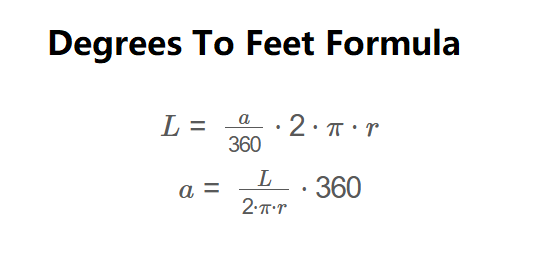 Home
Home
 Back
Back

Definition: This calculator converts an angle (in degrees or radians) to an arc length (in feet, meters, inches, or centimeters), or vice versa, based on the radius of a circle. It uses the arc length formula to compute the length of a circular arc or the angle subtended by a given arc length.
Purpose: It is used by students, engineers, architects, and professionals in fields like surveying, navigation, or design to relate angular measurements to physical lengths in various units, accommodating different measurement systems.
The calculator uses the following formulas, as shown in the image above:
\( L = \frac{a}{360} \cdot 2 \cdot \pi \cdot r \)
\( a = \frac{L}{2 \cdot \pi \cdot r} \cdot 360 \)
Where:
Steps:
Calculating the relationship between angles and lengths is essential for:
Example 1: Calculate the arc length for a 1.0472-radian angle with a 2-meter radius, output in centimeters:
Example 2: Calculate the angle for a 150-centimeter arc length with a 1-meter radius, output in radians:
Q: How accurate is the degrees to feet conversion with different units?
A: The formula is mathematically exact for circular arcs when using consistent units. The calculator handles unit conversions precisely, but real-world applications may involve measurement errors or non-circular shapes.
Q: Can I use any combination of units?
A: Yes, you can select any combination of input and output units for angle (degrees, radians) and length (feet, meters, inches, centimeters). The calculator converts all values appropriately.
Q: Why is unit flexibility important?
A: Different fields and regions use different units (e.g., metric vs. imperial). Flexible unit selection ensures the calculator is versatile for global use in surveying, engineering, and education.